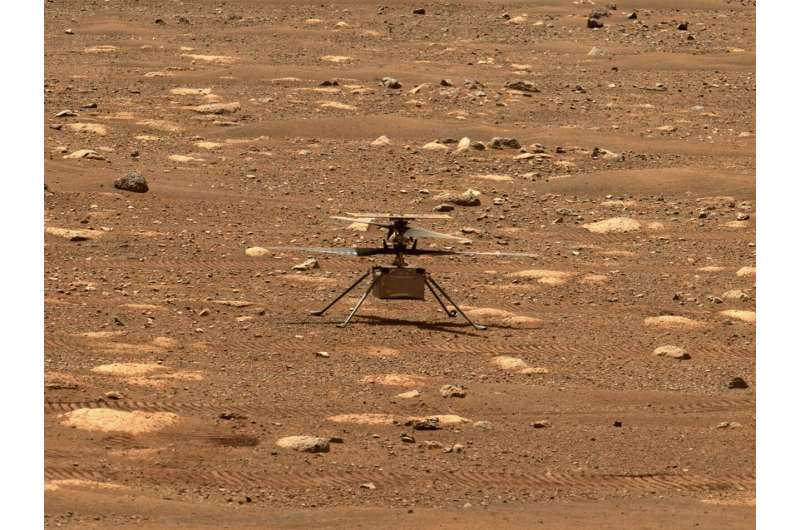"There's a reason that helicopter pilots on Earth prefer to land on helipads," said Jason Rabinovitch, a co-author and assistant professor at Stevens. "When a helicopter lands in the desert, its downdraft can stir up enough dust to cause a zero-visibility 'brownout'—and Mars is effectively one big desert."
Rabinovitch has been working on the Ingenuity program since 2014, joining the Jet Propulsion Laboratory soon after the concept was first pitched to NASA and creating the first theoretical models of helicopter dust lifting in the dusty Martian environments. At Stevens, Rabinovitch continues to work with JPL and investigates plume-surface interactions during powered descent of a spacecraft. He also models supersonic parachute inflation and geophysical phenomena, such as plumes on Enceladus.
Studying dust dynamics on another planet isn't easy, explained Rabinovitch. "Space is a data-poor environment. It's hard to send videos and images back to Earth, so we have to work with what we can get."
To overcome that challenge, Rabinovitch and colleagues at JPL used advanced image-processing techniques to extract information from six helicopter flights, all low-resolution videos captured by Perseverance. By identifying tiny variations between video frames, and the light intensity of individual pixels, the researchers were able to calculate both the size and the total mass of dust clouds kicked up as Ingenuity took off, hovered, maneuvered, and landed.
The results were within striking distance of Rabinovitch's engineering models—itself a remarkable achievement, given the limited information available to the team way back in 2014, when Rabinovitch and his colleagues were writing back-of-the-envelope calculations intended to support the original design of Ingenuity.
The research shows that, as predicted, dust is a significant consideration for extra-terrestrial rotorcraft, with Ingenuity estimated to have kicked up about a thousandth of its own mass (four pounds) in dust each time it flew. That's many times more dust than would be generated by an equivalent helicopter on Earth, though Rabinovitch cautions that it's tricky to draw direct comparisons.
"It was exciting to see the Mastcam-Z video from Perseverance, which was taken for engineering reasons, ended up showing Ingenuity lifting so much dust from the surface that it opened a new line of research," said Mark Lemmon, senior research scientist at the Space Science Institute Mars Science Laboratory and first author of the study.
"When you think about dust on Mars, you have to consider not just the lower gravity, but also the effects of air pressure, temperature, air density—there's a lot we don't yet fully understand," Rabinovich said. Still, he added, that's what makes studying Ingenuity's dust clouds so exciting.
A better understanding of brownouts could help NASA extend future robotic missions by keeping solar panels operational for longer or make it easier to land delicate equipment safely on the dusty Martian surface. It could also offer new insights into the role of wind and wind-carried dust in weather patterns and erosion, both on Earth and in extreme environments around the Solar System.
More information: M. T. Lemmon et al, Lifting and Transport of Martian Dust by the Ingenuity Helicopter Rotor Downwash as Observed by High‐Speed Imaging From the Perseverance Rover, Journal of Geophysical Research: Planets (2022). DOI: 10.1029/2022JE007605
Journal information:Journal of Geophysical Research: Planets
Provided by Stevens Institute of Technology



